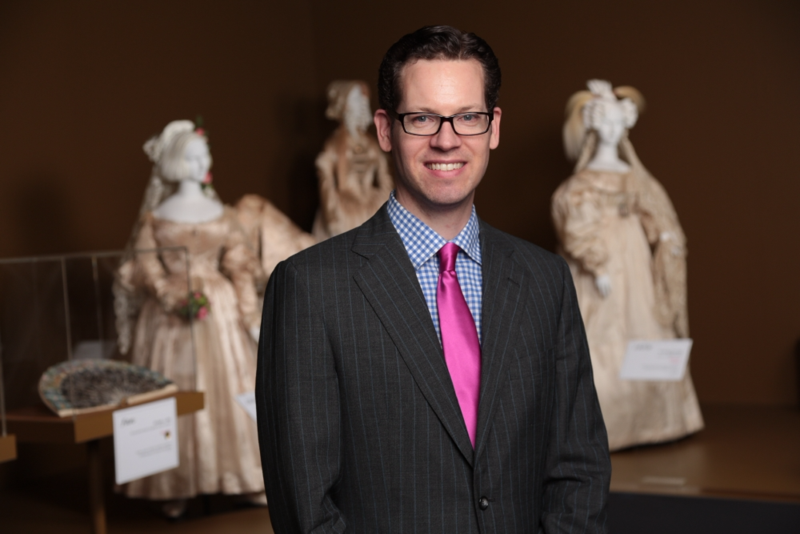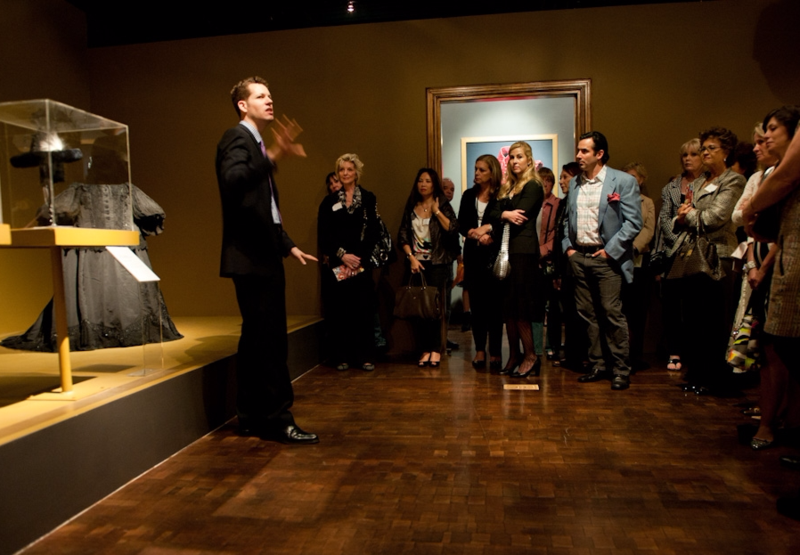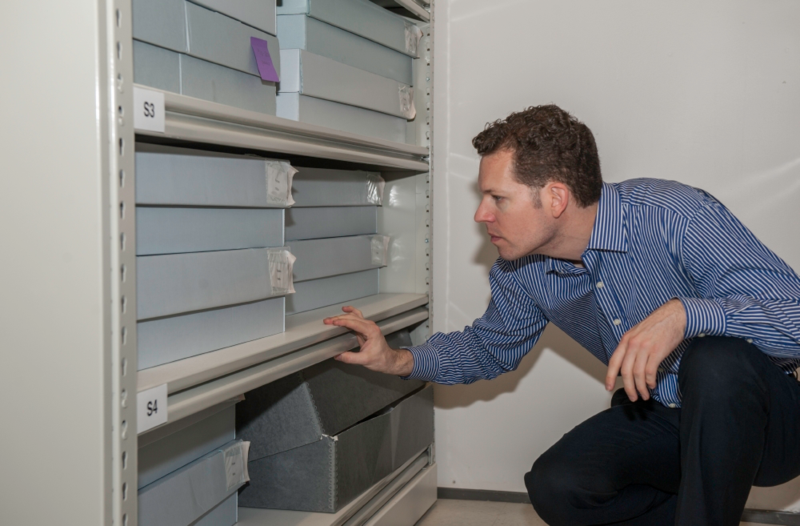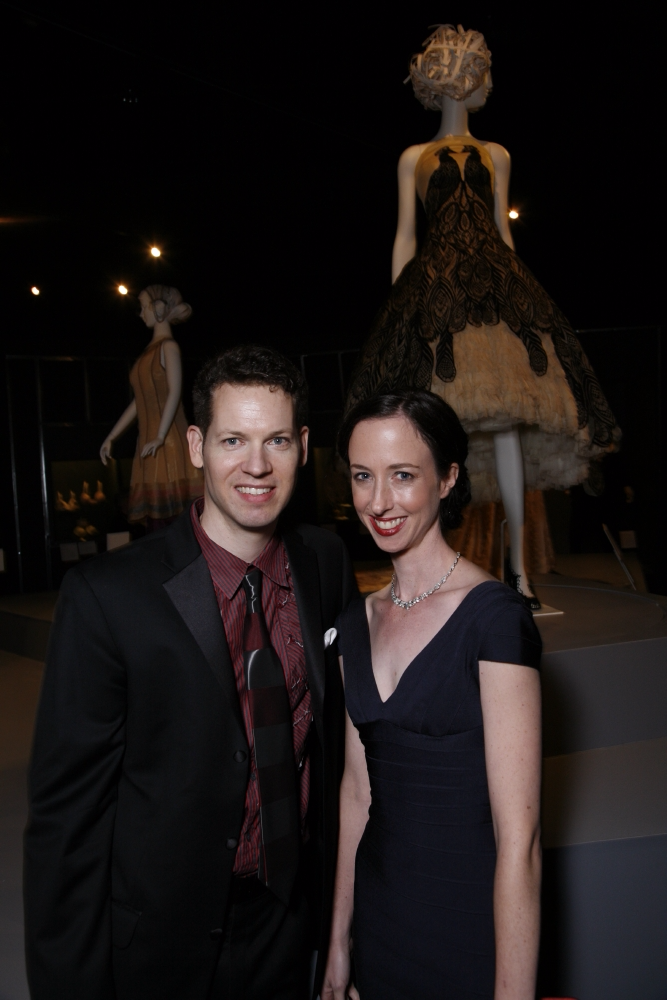FIDM Museum is proud to participate in Museum Week, an international social media initiative to go behind-the-scenes of your favorite cultural institutions. From March 28 to April 4, a daily theme will bring you new insight about the inner-workings of our museum. Today's theme is #PeopleMW; it's an opportunity to get to know the individuals who care for the objects in our collection, curate the exhibitions, organize the budgets, work with donors, lead visitor tours, and all of the other infinite tasks that go along with running a museum.
We thought our fearless leader Kevin Jones would be the perfect person to provide a glimpse of daily life at the FIDM Museum! Kevin has been with the Museum since 1999; he began his career as Collections Manager, and was appointed Curator in 2002. He and Associate Curator Christina Johnson curated and wrote accompanying catalogues for the headline exhibitions High Style: Betsy Bloomingdale and the Haute Couture in 2009, and Fabulous! Ten Years of Museum Acquisitions in 2011. In this #MuseumWeek interview, Kevin discusses the realities of working in a museum, why he studies fashion history, and where he finds our amazing new acquisitions!
The word "curator" is used a lot these days – what does your job as Curator of the FIDM Museum entail?
I mainly use the word "curator" to mean someone working with objects on theme-specific projects that have educational value. A curator does not need to be at an institution like the FIDM Museum, or even handle physical objects (think of online exhibitions), but does need to be an authority in what he/she is talking about. The optimal word is "educate": to tell a story and relay information in an insightful, meaningful way through the use of objects. I personally don't like to see the word watered down or used to sell merchandise: "I curated my Pinterest board" or "I curated my breakfast this morning!"
In my day-to-day work, I hunt for objects for the Museum's upcoming women's sports fashion exhibition (opening 2019) and research the objects we already have for the catalogue. I also return a lot of phone calls to potential donors and set up appointments to examine objects either in our office or at private homes. I interact with colleagues on a myriad of topics, such as Gallery tours, travel arrangements, and loans to other museums. I also spend a lot of my time with our Fashion Council, the volunteer support group that helps us raise money for object acquisitions and project development.
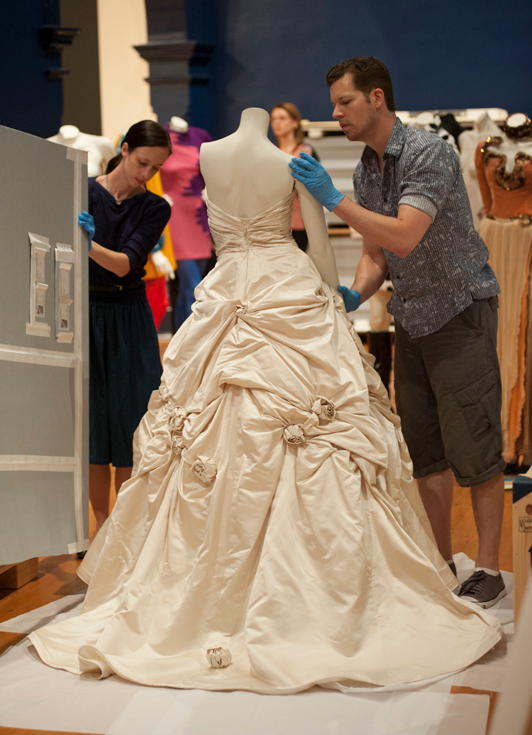
What would someone be surprised to learn about the reality of working in a museum?
How long everything takes to do! When I talk with the general public about our upcoming exhibitions, most everyone is surprised how long it takes to do anything: 3 to 5 years of planning, hundreds of hours in research and writing for a catalogue, or even dressing a mannequin–I've spend 8 hours installing one garment, and that doesn't include the conservation time it might take to stabilize a bodice before it can be mounted safely! I think that is why people love to hear stories about the processes we go through to execute an exhibition, or to see behind-the-scenes into storage or (rarely) Gallery preparation because it's outside of the normal 9 to 5 office job.
Fashion objects are displayed, stored, and studied differently than other art objects. What are some of the unique challenges of curating a fashion exhibition?
Well, for our upcoming women's sports fashion exhibition–which is currently titled Outdoor Girls: Sporting Fashion, 1800 to 1950s –-it's finding the objects. When I started at the FIDM Museum in 1999, we didn't have much in the way of early sportswear. We had a nice collection of mid-20th-century bathing suits and general day wear that was related to developments in women's emancipation (such as pants), but not much early material. So I took it as a challenge to develop that area of our collection…and it's taken on a life of its own! When the exhibition and catalogue debut in 2019, we will have gathered over 500 individual objects that make-up more than 110 fully accessorized mannequins covering 49 sporting activities. And we will have spent 15 years in development. This is a very unusual opportunity to be able to dedicate so much time to one project…and, of course, keep everything else churning in our office and in the Galleries.
What is the most interesting place you've found an object for the collection?
Humm…I'm always on the hunt and search the Internet into the wee hours, which is where I've found many interesting objects. Lately, it was a c. 1858-62 rain mantle. I do keyword search with specific goals in mind, but somehow always end up chasing tangent threads. This time it was a small photo on Pinterest (remember where everything is curated!!) that jumped out at me. I figured the mantle was in an institutional collection because that is where so many of the often un-traceable images originate. But it turned out that this garment was in a private collection. It is perfect for our Outdoor Girls project and unlike anything I've seen before–in fact, no one I've shown it to has seen another example. So I stared writing letters and finally located the owner through a friend of a friend of a friend. And after a year of negotiations, was able to acquire it for the Museum. Whew!
Can you describe a few of the changes you've witnessed in the museum field over the years?
The field of fashion history has gotten so much BIGGER! I used to have almost all the publications memorized because not that many came out each year. Exhibitions with catalogues were 3 to 5 years in the making and there were not as many university programs that studied fashion outside of Home Economics. I could generally keep up with what was going on. Now I can't. I have stacks of books at home that I don't have time to get through. I often just read the image captions and select chapters. And who has time to keep up with blogs…except for the FIDM Museum Blog, of course! But, this is a great thing. There is no limit to the ways in which fashion studies can be examined; everyone, everywhere at some point in life puts something onto their body for some reason. Why? That's what fashion historians want to find out, and our opportunities for discussion and display have increased. We're now the fashion!
Why fashion history? What does this subject mean to you?
Everything. I have no choice in the matter. My grandmother on my mother's side of the family loved clothing. My grandfather on my father's side of the family liked anything old. They perfectly came together in me and I've never had to second guess what I wanted to do in life!
Thank you Kevin! For more #MuseumWeek coverage, make sure to follow our Twitter, Instagram, and Facebook accounts.

